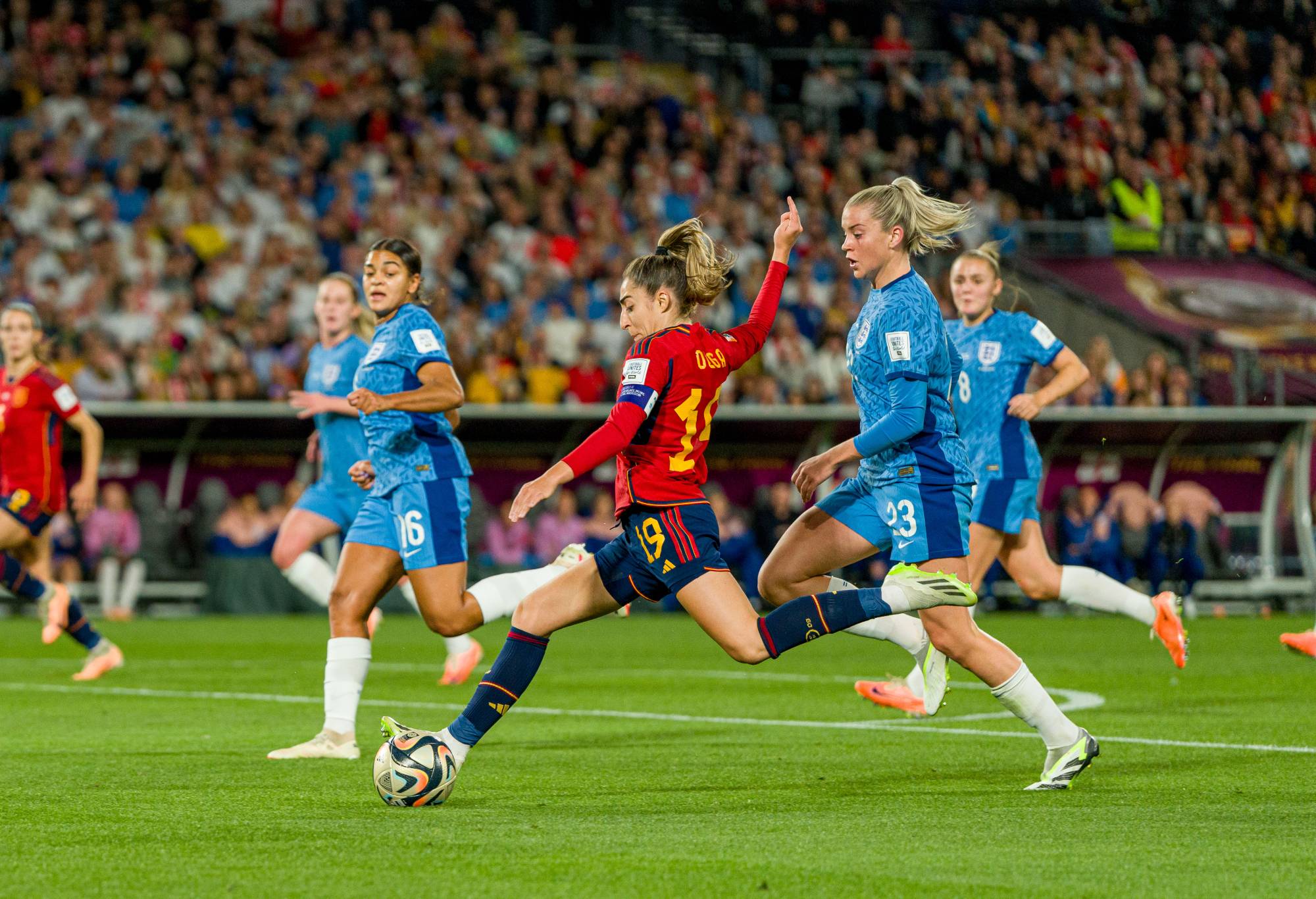WATCH: Mo Salah and Jurgen Klopp involved in heated touchline argument during West Ham draw
Salah was dropped from the starting side for the visit to London - and the striker was involved in a furious confrontation with Klopp…
The scintillating tiki-taka – short passing and movement – of the Spanish La Roja proved too strong for the excellent English Lionesses in the FIFA Women’s World Cup final.
Despite boasting an outstanding record prior to the final – the Lionesses were undefeated in 29 competitive games going back to March 2020 – and super coach Sarina Wiegman having coached teams to the last four major finals (winning the last two European Championships with England and the Netherlands and runner-up in the last World Cup with the Netherlands), Spain controlled large passages of the game, particularly in the first half, and probably deserved more than the final 1-0 scoreline.

(Photo by Andy Cheung/Getty Images)
The introduction in the second half of Lauren James and Chloe Kelly provided England with more going forward, and with legs tiring the game opened up. Statistics seldom lie and Spain’s dominance was shown in their 57% possession, 13 shots to 8, expected goals (xG) of 2.2 to 0.5, and they had a penalty controversially saved.
Spain were able to keep the ball and control the match more effectively and this was where the game was lost for England, whose 57 year wait for another World Cup win continues.
The penalty controversy occurred in the 67th minute when Spain were awarded a penalty after a VAR check. The penalty was well saved by Mary Earps (named golden glove award winner for the tournament) despite both the ball being taken from well in front of the penalty spot and Earps clearly being off her line before the penalty was taken.
Curiously there was no retake ordered by American referee Tori Penso.
With her outstanding record there had been unprecedented, revolutionary talk of Sarina Wiegman taking over the reigns of the recently vacated England men’s coaching position, but after this loss in the final that would seem less likely.
Much was made of the unsettled and uneasy relationship between the Spain players and coach Jorge Vilda, in stark contrast to the settled England team whose players genuinely seem to like and respect their coach.
15 Spanish players initially boycotted the team. Three key players from this group; Mariana Caldentey, Ona Batlle and the influential Aitana Bonmati (who won the golden ball award as best player of the tournament) were later “re-selected” and joined the squad.

(Photo by Phil Walter/Getty Images)
One wonders how dominant Spain might have been with their full complement of players, although this probably would have denied us the pleasure of seeing former 400m sprinter Salma Paralluelo, who scored a hat-trick on debut in a friendly last November, scored two goals in the tournament despite mostly coming on as a substitute, hit the post in the final, is just 19 years old, and was named best young player of the tournament.
Spain’s lack of love for their manager was obvious seen earlier in the tournament when the team celebrated their victories together, away from their coach.
The majority of the Spanish team is made up of players from Barcelona, so some thought that the inside knowledge of the Lionesses’ two Barcelona players Lucy Bronze and Kiera Walsh would help England in the final, but this appeared to be negligible.
This one club cohesion in the national team certainly seemed to help Spain, as Barcelona have won the Champion’s League twice in the last three years and are the current world record holders for women’s football with a crowd of 91,648 people.
While this wonderful World Cup will rightfully be remembered and celebrated for many things, the crowd numbers in particular were unexpected and unprecedented – especially for matches not involving the Matildas – with just under 2 million fans attending 64 matches at a healthy average of over 31,000 per game.
I believe the MCG currently has a capacity of more than 95,000. Would a world record-breaking MCG crowd for a Matildas’ match confirm Australia’s status as a “true footballing nation”?